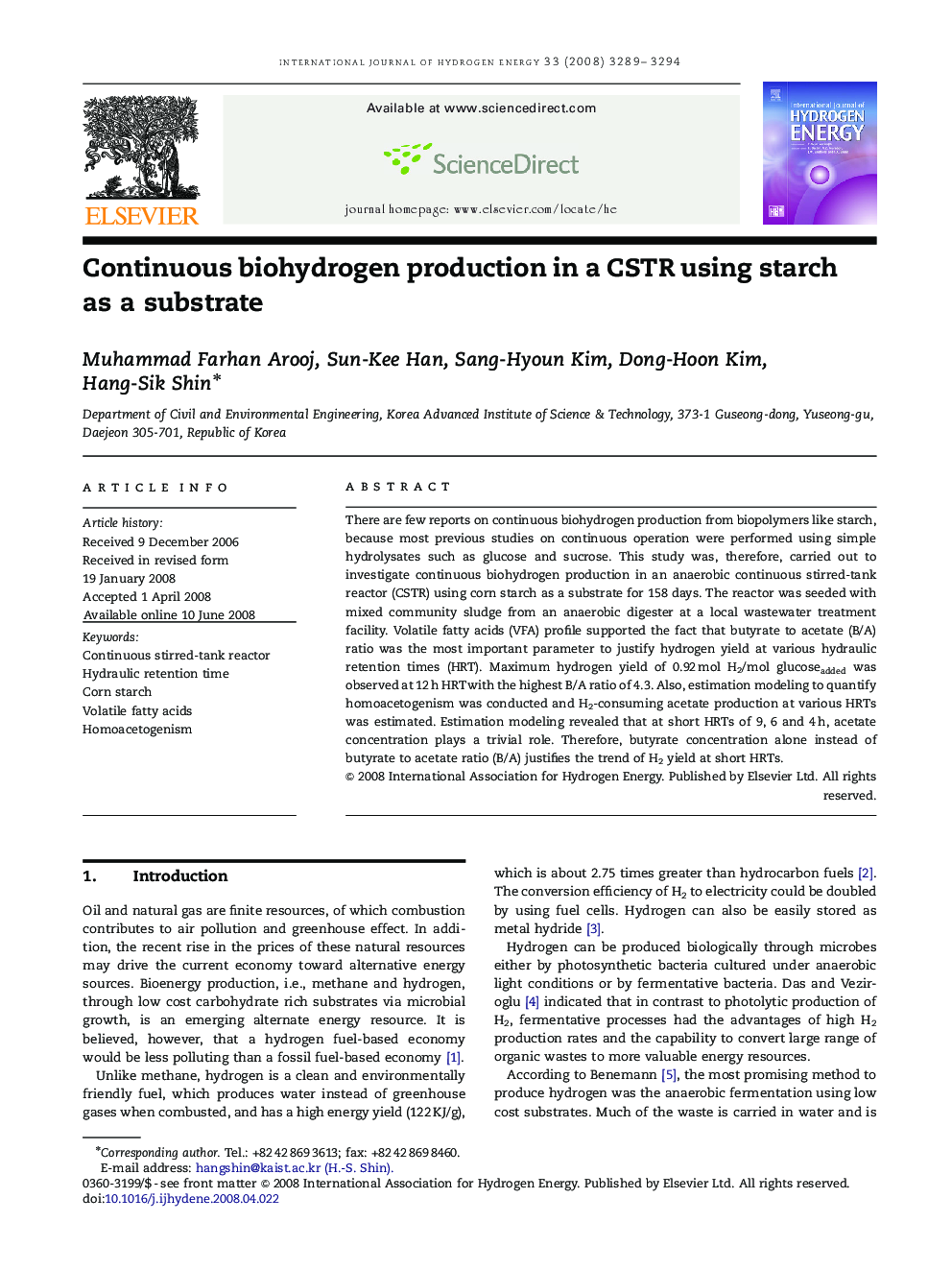| Article ID | Journal | Published Year | Pages | File Type |
|---|---|---|---|---|
| 1279371 | International Journal of Hydrogen Energy | 2008 | 6 Pages |
There are few reports on continuous biohydrogen production from biopolymers like starch, because most previous studies on continuous operation were performed using simple hydrolysates such as glucose and sucrose. This study was, therefore, carried out to investigate continuous biohydrogen production in an anaerobic continuous stirred-tank reactor (CSTR) using corn starch as a substrate for 158 days. The reactor was seeded with mixed community sludge from an anaerobic digester at a local wastewater treatment facility. Volatile fatty acids (VFA) profile supported the fact that butyrate to acetate (B/A) ratio was the most important parameter to justify hydrogen yield at various hydraulic retention times (HRT). Maximum hydrogen yield of 0.92 mol H2/mol glucoseaddedglucoseadded was observed at 12 h HRT with the highest B/A ratio of 4.3. Also, estimation modeling to quantify homoacetogenism was conducted and H2-consuming acetate production at various HRTs was estimated. Estimation modeling revealed that at short HRTs of 9, 6 and 4 h, acetate concentration plays a trivial role. Therefore, butyrate concentration alone instead of butyrate to acetate ratio (B/A) justifies the trend of H2 yield at short HRTs.
